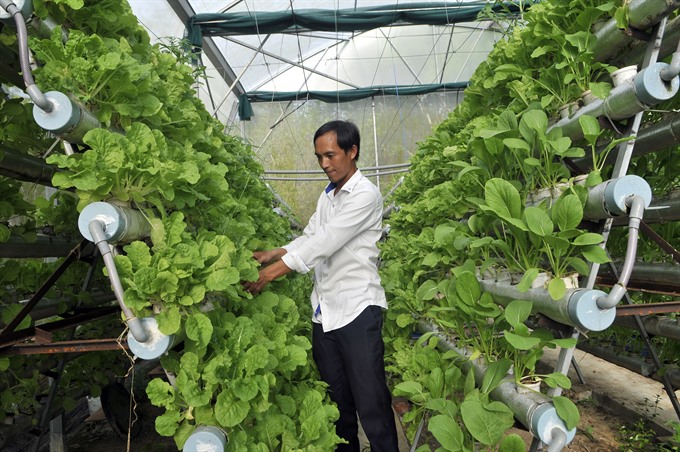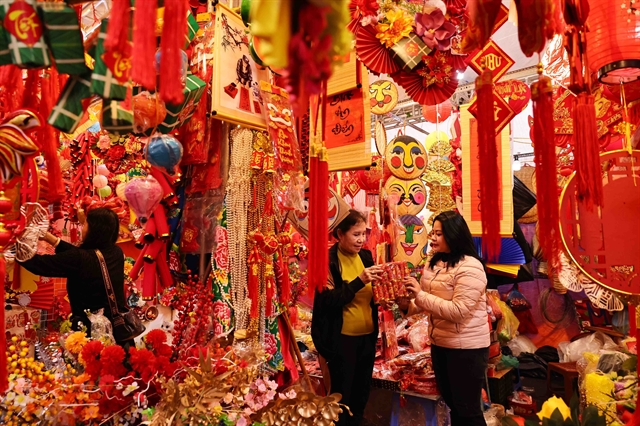 Society
Society

Organisations and establishments from private sector can join testing and certificating plant varieties in Việt Nam if the proposed draft law on Plant Cultivation by Agriculture Ministry gets approved.
 |
| A farmer in the southern province of Kiên Giang takes care of his vegetables cultivated in a hydroponic system. — VNA/VNS Photo Lê Sen |
HÀ NỘI — Organisations and establishments from private sector can join testing and certificating plant varieties in Việt Nam if the proposed draft law on Plant Cultivation by Agriculture Ministry gets approved.
Nguyễn Hồng Sơn, head of Plant Cultivation Department under the ministry said at a conference on Tuesday the change was one of new contents added to the ministry’s proposed draft law.
Currently, under the Ordinance on Plan Varieties issued by National Assembly Standing Committee in 2004, organisations and individuals have to apply for recognition to sources of planting materials at agriculture departments in their provinces/cities in order to gain ownership on a plant variety.
The draft law includes regulations on plant variety certification and operation of testers.
Testing organisations and establishments that are lawfully eligible for operating in the field will be responsible for their certifications.
For the first time, the draft law also regulates on certification and circulation of varieties that are used in agriculture productions in localities.
Plant varieties would be controlled strictly, especially after they are used for production.
The draft law also includes regulations on conserving elite trees which are greatly superior to the average tree of the same species in some inherited characteristics as determined by progeny tests.
"Any new plant variety will be eligible for circulation only when its owner ensures sources of planting materials or a cultivation area of the plant," Sơn said.
The official said the draft law with regulations on rights and obligations of producers was expected to solve existing bottle-necks in Việt Nam’s cultivation sector, for example, the lack of connectivity from seeding production, process and commercial products.
Proposed regulations on specialised cultivation areas, production schemes and farmer-enterprises co-operation are expected to promote certificated products.
Chairman of the National Assembly Committee on Science, Technology and Environment Phan Xuân Dũng said that it’s time to have a Law on Plant Cultivation to facilitate the management of cultivation in accordance with value chain for more values added, thus increase competitiveness of Vietnamese products.
According to Plant Cultivation Department, this year, about 7.65 million ha of land is used for rice cultivation, 945,000 ha for vegetable, 175,000 ha for all kinds of beans, 930,000 ha for fruits, 665,000 ha for coffee and about 300,000 ha for cashew.
The rice cultivation area is reduced by about 63,600 ha while the area for fruits increases 6,100 ha.
According to the Ministry of Agriculture and Rural Development, Việt Nam last year earned a record US$3.45 billion from fruit and vegetable exports in 2017, up 40.5 percent from the previous year. For the first time, export turnover of vegetable and fruits excesses those of rice and raw oil.
The country planned to expand cultivation areas for high quality and highly profitable plants and crops. It also wanted to boost “from farm to table” or improved connectivity among various processes in the food chain from agricultural production to consumption.
Improvement in food processing and storage are also expected to help Vietnamese cultivation products to enter demanding markets like US, Japan, EU and Korea. — VNS




